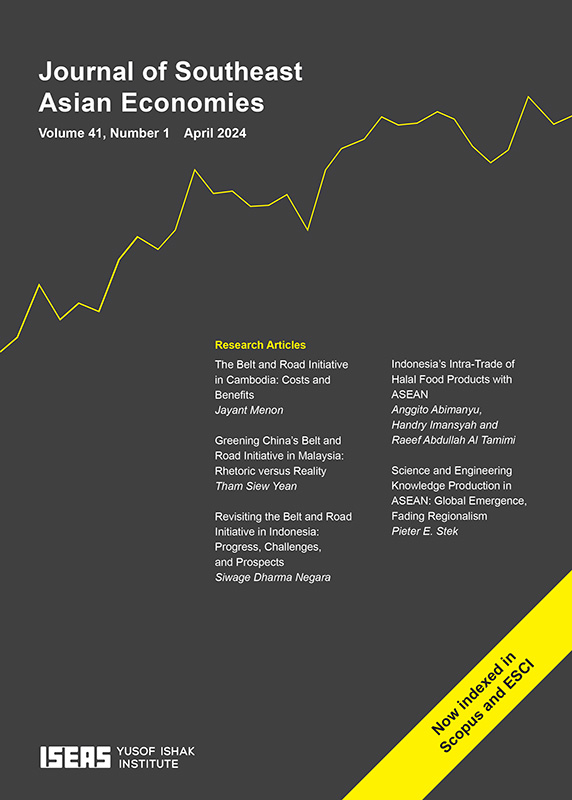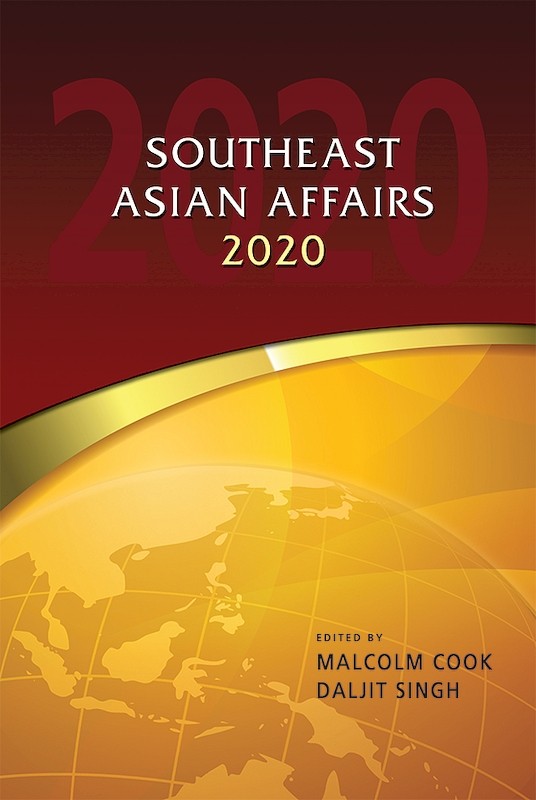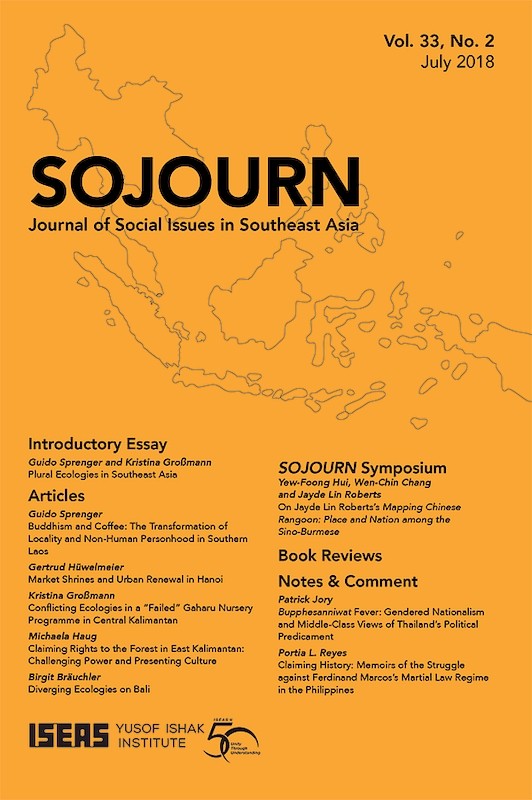Journal of Southeast Asian Economies Vol. 41/1 (April 2024)

Date of publication:
April 2024
Publisher:
ISEAS – Yusof Ishak Institute
Number of pages:
87
Code:
AE41/1
Soft Cover
ISSN: 23395095
Contents
-
Journal of Southeast Asian Economies Vol. 41/1 (April 2024).
[Whole Publication, ISSN: 23395206] -
Preliminary pages
- ARTICLES
-
1. The Belt and Road Initiative in Cambodia: Costs and Benefits, by Jayant Menon, author see abstractChina is Cambodia’s largest bilateral donor, lender, investor, and trading partner. Economic relations between the two countries have been strengthened by Cambodia’s active participation in the Belt and Road Initiative (BRI). However, participating in the BRI has both costs and benefits. It has addressed Cambodia’s infrastructure deficits, reduced trade and transport costs, and supported productivity and economic growth. This has improved living conditions and reduced poverty. On the negative side, there are concerns over environmental decay, land grabbing, and associated losses in livelihoods. On the whole, benefits appear to outweigh costs in Cambodia. Nevertheless, China is trying to improve the environmental, social, and financial sustainability of BRI investments, following international criticisms. Although there are early signs that the implementation of projects is becoming more environmentally friendly, concerns over inadequate environmental impact assessments and resettlement programs remain. Increasing reliance on one country also carries risks; diversifying sources may help achieve Cambodia’s aim of diversifying its economic structure.
-
2. Greening China’s Belt and Road Initiative in Malaysia: Rhetoric versus Reality, by Tham Siew Yean, author see abstractChina announced a shift towards green infrastructure, green investment and green financing at the 2019 Second Belt and Road Forum for International Cooperation in response to criticisms of the negative environmental impact of some earlier BRI infrastructure projects. The objective of this paper is to explore whether there has been a shift in Malaysia towards the new green-aspired goals of the BRI in terms of green governance and projects. The key findings of this paper suggest that there is no discernible shift to green projects as non-green investments are also accepted. Malaysia has requirements for green governance, but implementation can be an issue. Host economies, like Malaysia, must take ownership of green requirements for there to be a sustained shift towards green governance. Likewise, China’s investments have to comply with local laws, which can improve the environmental impact when local laws and regulations are judiciously implemented.
-
3. Revisiting the Belt and Road Initiative in Indonesia: Progress, Challenges, and Prospects, by Siwage Dharma Negara, author see abstractThis paper provides an update on the BRI projects in Indonesia. It discusses the progress and challenges of China’s outbound investment and infrastructure projects under the Initiative and outlines how perceptions about the BRI have evolved in Indonesia. Moreover, some case studies highlight the issues and problems associated with BRI implementation, along with future prospects and necessary readjustments. It is argued that, by learning from previous projects, the government should create a clear legal and institutional framework to improve future BRI projects. The state should rigorously assess the viability and financial sustainability of the projects. Furthermore, proper environmental and ecological assessments by independent parties are critical to prevent conflict of interest. The central government authorities should work with various stakeholders, including NGOs and local communities, to address the issues they face. Finally, stricter regulations should be in place for the Indonesian government and Chinese investors to comply with, in order to ensure that locals also benefit from the projects.
-
4. Indonesia’s Intra-Trade of Halal Food Products with ASEAN, by Anggito Abimanyu, Muhammad Handry Imansyah, Raeef Abdullah Al Tamimi, authors see abstractThe study highlights the economic factors that can increase intra-industry trade (IIT) of halal food products in ASEAN. Focusing on Indonesia, the largest market for halal products in the grouping after Malaysia, this study finds that Indonesian halal food products for trade have a competitive advantage over other ASEAN countries. However, the regression model with panel data shows that there has also been an increase in industrial production in the country’s trading partners. This research provides a new perspective on the future of regional economic cooperation, especially in the form of halal product intra-trade among ASEAN member states. It contributes to the literature on the regional halal market by including data exclusively for a halal category, which has not been explored before. Moreover, it offers suggestions to Indonesian halal trade policymakers on possible ways of expanding operations both regionally and internationally.
-
5. Science and Engineering Knowledge Production in ASEAN: Global Emergence, Fading Regionalism, by Pieter E Stek, author see abstractThis study offers an analysis of the rapidly increasing volume of science and engineering knowledge production among ASEAN member states. It explores the extent to which regional economic integration has influenced research profiles (areas of specialization) and international research collaboration. The study utilizes an open-source dataset of nationally aggregated scientometric indicators extracted from the Scopus database. Revealed comparative advantage and scientific co-authorship methodologies are applied to analyse changes in research profiles and international research collaboration. The concept of revealed comparative advantage has not previously been applied to ASEAN research output. The findings show that ASEAN countries have increased their research profile in manufacturing-linked technologies and have become less regional and more global in their scientific collaborations. Malaysia, Vietnam and especially Singapore have increased their average research quality, while Indonesia has seen a notable decline in research quality amid a large quantitative increase in research output. The research profiles and collaboration networks of ASEAN members are diverging, which runs counter to the converging trend observed in the European Union. The international research collaborations of ASEAN member states increasingly take place outside of the ASEAN region itself and with other countries in Asia.
-
Acknowledgement List






